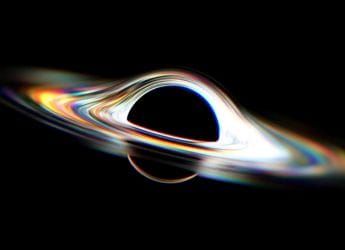- Home
- Science
- Science News
- Bizzare 'Failed Star' Planet Orbiting Double Star System in Milky Way Discovered by Researchers
Bizzare 'Failed Star' Planet Orbiting Double Star System in Milky Way Discovered by Researchers
Astronomers find an exoplanet orbiting two stars at a 90-degree tilt, challenging planet formation theories.

Photo Credit: ESO/L. Calçada
A rare system hosts the first "polar planet" orbiting two brown dwarfs
Researchers have found an odd Milky Way planet orbiting over and under the poles of two failing stars. Star systems arise from flattened, spinning disks of gas and dust, with materials gathering along the plane of the disk, forming planets, moons, and asteroids around a newborn star. Only sixteen exoplanets had ever been verified to circle a binary pair; all of those planets orbit in the plane of the stars' orbits of one another, not over the poles. The elusiveness of these planets makes this find very fascinating.
Researchers knew of the two objects this odd planet orbits before they came upon it. They originally identified the do-si-doing pair using the SPECULOOS Southern Observatory in Chile in 2018, only to find they were brown dwarfs, failed stars insufficient in mass to ignite. The system began to look stranger once they zoomed in on the binary pair with the Very Large Telescope at the Paranal Observatory in Chile.
Scientists Find First Polar Planet in Bizarre Double-Brown-Dwarf System
According to the report, scientists have found the strangest planetary system yet observed, featuring the first-ever "polar planet" and a planet that orbits two stars. Better known as "failed stars," brown dwarfs—stellar bodies that fail to gather enough materials to attain the mass required to start the fusion of hydrogen to helium in their cores—are the parent stellar bodies of exoplanet 2M1510 (AB). This discovery is the first solid evidence of such a fully formed system.
Exoplanet 2 M1510 (AB) b is a stellar body known as a "failed star" because it fails to gather enough matter to reach the mass needed to start the fusion of hydrogen to helium in its core. The chance of stellar bodies having a binary partner increases with mass, making a double-brown-dwarf star system pretty surprising.
Rare Eclipsing Brown Dwarf Pair Hosts First Known Polar-Orbit Planet
This is only the second pair of eclipsing brown dwarfs ever discovered, meaning one of the brown dwarfs eclipses the other, as seen from Earth's vantage point. Team member Amaury Triaud of the University of Birmingham said that "a planet orbiting not just a binary, but a binary brown dwarf, as well as being on a polar orbit, is rather incredible and exciting."
The discovery was incidental, since the observations were not aimed at such a planet or orbital arrangement. This realization usually helps one to understand what is sensible on the interesting planet we live on.
Get your daily dose of tech news, reviews, and insights, in under 80 characters on Gadgets 360 Turbo. Connect with fellow tech lovers on our Forum. Follow us on X, Facebook, WhatsApp, Threads and Google News for instant updates. Catch all the action on our YouTube channel.
Related Stories
- Samsung Galaxy Unpacked 2025
- ChatGPT
- Redmi Note 14 Pro+
- iPhone 16
- Apple Vision Pro
- Oneplus 12
- OnePlus Nord CE 3 Lite 5G
- iPhone 13
- Xiaomi 14 Pro
- Oppo Find N3
- Tecno Spark Go (2023)
- Realme V30
- Best Phones Under 25000
- Samsung Galaxy S24 Series
- Cryptocurrency
- iQoo 12
- Samsung Galaxy S24 Ultra
- Giottus
- Samsung Galaxy Z Flip 5
- Apple 'Scary Fast'
- Housefull 5
- GoPro Hero 12 Black Review
- Invincible Season 2
- JioGlass
- HD Ready TV
- Laptop Under 50000
- Smartwatch Under 10000
- Latest Mobile Phones
- Compare Phones
- OnePlus 15R
- Realme Narzo 90x 5G
- Realme Narzo 90 5G
- Vivo S50 Pro Mini
- Vivo S50
- OPPO Reno 15c
- Redmi Note 15 5G
- Redmi Note 15 Pro 5G
- Asus ProArt P16
- MacBook Pro 14-inch (M5, 2025)
- Infinix Xpad Edge
- OnePlus Pad Go 2
- OnePlus Watch Lite
- Just Corseca Skywatch Pro
- Acerpure Nitro Z Series 100-inch QLED TV
- Samsung 43 Inch LED Ultra HD (4K) Smart TV (UA43UE81AFULXL)
- Asus ROG Ally
- Nintendo Switch Lite
- Haier 1.6 Ton 5 Star Inverter Split AC (HSU19G-MZAID5BN-INV)
- Haier 1.6 Ton 5 Star Inverter Split AC (HSU19G-MZAIM5BN-INV)

















